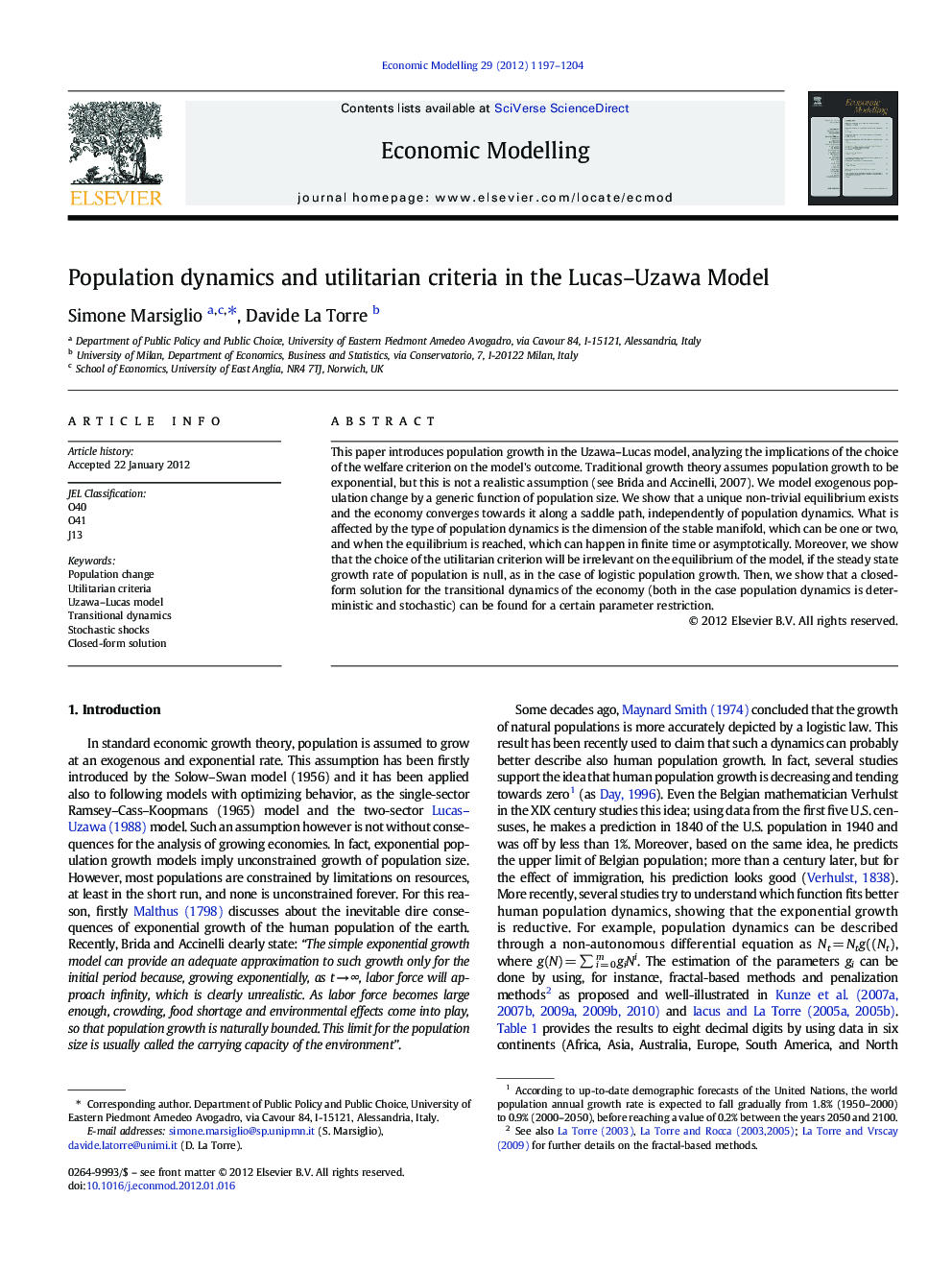| Article ID | Journal | Published Year | Pages | File Type |
|---|---|---|---|---|
| 5055293 | Economic Modelling | 2012 | 8 Pages |
This paper introduces population growth in the Uzawa-Lucas model, analyzing the implications of the choice of the welfare criterion on the model's outcome. Traditional growth theory assumes population growth to be exponential, but this is not a realistic assumption (see Brida and Accinelli, 2007). We model exogenous population change by a generic function of population size. We show that a unique non-trivial equilibrium exists and the economy converges towards it along a saddle path, independently of population dynamics. What is affected by the type of population dynamics is the dimension of the stable manifold, which can be one or two, and when the equilibrium is reached, which can happen in finite time or asymptotically. Moreover, we show that the choice of the utilitarian criterion will be irrelevant on the equilibrium of the model, if the steady state growth rate of population is null, as in the case of logistic population growth. Then, we show that a closed-form solution for the transitional dynamics of the economy (both in the case population dynamics is deterministic and stochastic) can be found for a certain parameter restriction.
⺠We study how population growth and welfare criteria affect the Lucas-Uzawa model. ⺠We consider both deterministic and stochastic population change. ⺠We find a closed-form solution under a certain parameter restriction.
